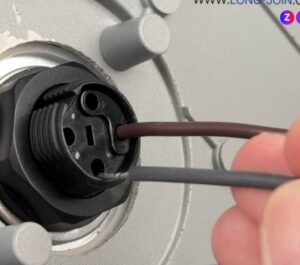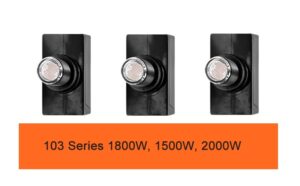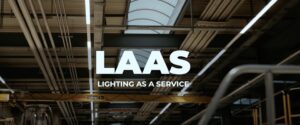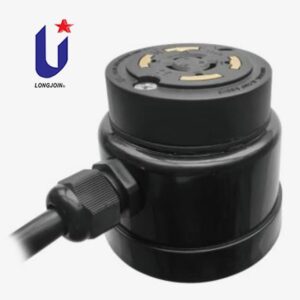Smart Lighting Solutions: Enhancing Efficiency and Sustainability
Introduction
Smart lighting is lighting that doesn’t just brighten up your space but does so with a touch of intelligence. It is more than just a fancy tech upgrade; it’s a powerhouse of efficiency and sustainability.
We’re delving into the details of how these systems are not just flipping switches but reshaping the way we think about energy consumption and eco-friendliness.
From intelligent sensors that adjust brightness based on natural light levels to interconnected systems that communicate seamlessly, smart lighting is making outdoor spaces not only safer and more vibrant but also significantly more sustainable.
So, if you’re curious about how your garden, street, or office parking lot can benefit from these innovations, stick around.
Energy-Efficient Outdoor Lighting
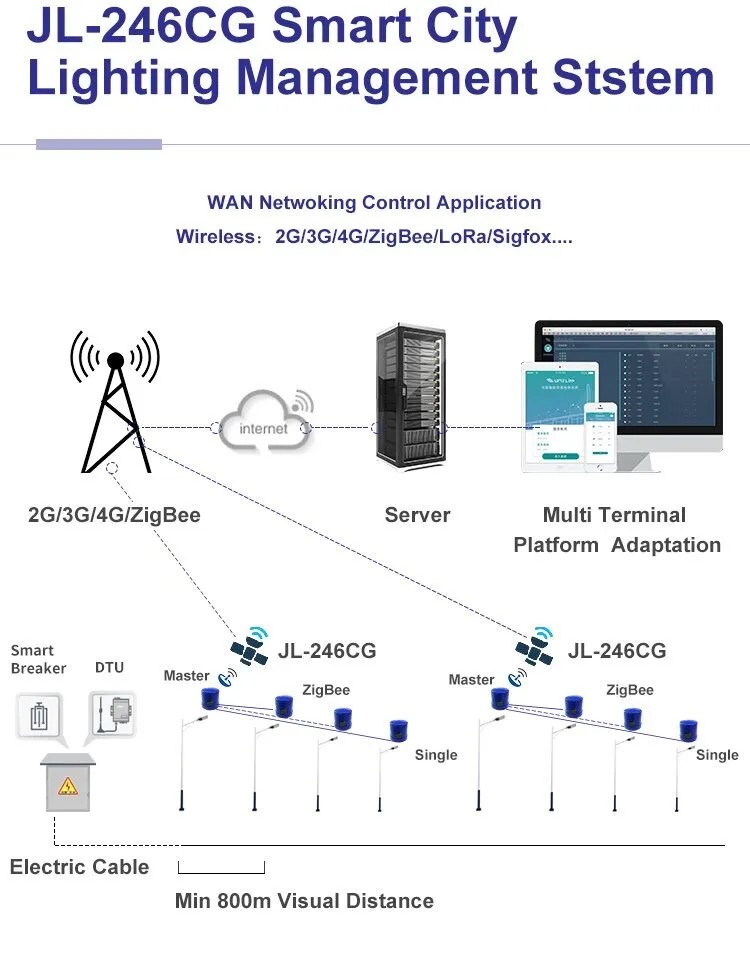
The most important part of these devices lies in the intelligence embedded within the smart lighting systems. Unlike traditional counterparts, these systems boast advanced technologies that allow for precise control over when, where, and how much light is needed.
Smart lighting adapts to environmental conditions in real-time. Whether it’s adjusting brightness based on natural light availability or responding to motion, these systems ensure that energy is only expended when necessary.
Equipped with sensors, smart outdoor lights can detect movement, ambient light levels, and even weather conditions. This data-driven approach enables the system to optimize energy usage by activating lights only when relevant conditions are met.
Additionally, smart lighting systems empower users with the ability to create customized schedules. This means lights can be programmed to turn on and off at specific times, aligning with actual needs and avoiding unnecessary energy consumption during daylight hours.
Moreover, the remote control feature adds another layer of efficiency. Users can monitor and control their outdoor lights from anywhere, ensuring lights are turned off when not needed, contributing to energy savings.
Smart lighting predominantly utilizes energy-efficient LED technology. LED bulbs consume significantly less energy than traditional incandescent or fluorescent bulbs, making them a key player in the energy conservation game.
While smart lighting systems may have a higher upfront cost, the long-term savings are substantial. The energy efficiency and prolonged lifespan of LED bulbs contribute to reduced maintenance and operational costs over time.
Reducing energy consumption isn’t just about saving on utility bills; it’s also about minimizing the environmental footprint. Smart outdoor lighting, with its energy-efficient features, aligns with sustainability goals and contributes to a greener, eco-friendly approach.
In essence, smart lighting systems redefine the landscape of outdoor illumination by offering a holistic approach to energy efficiency. From adaptive controls to LED technology, these systems not only save energy but also pave the way for a sustainable and eco-conscious outdoor lighting future.
Sustainability Benefits of Intelligent Lighting
One of the stellar features of intelligent lighting is its knack for energy efficiency. Smart systems, equipped with sensors and controls, optimize the usage of light based on real-time needs. Lights dim or brighten intelligently, ensuring energy is used only when necessary. This translates to significant energy savings, reducing the overall environmental footprint.
Here are some of its benefits:
Adaptive Illumination
Intelligent lighting systems are not just about flipping a switch. They respond dynamically to their environment. Picture a room where lights adjust automatically based on occupancy or daylight availability. This adaptability not only enhances user comfort but also minimizes unnecessary energy consumption, contributing to sustainable practices.
Remote Management
With the rise of smart lighting, remote management becomes a game-changer. You can control the lighting of an entire building or city block from a centralized system. This not only streamlines operations but also reduces the need for physical interventions, cutting down on travel-related carbon emissions and promoting a more eco-friendly approach to lighting management.
Longevity and Durability
Intelligent lighting systems often boast longer lifespans and durability. The ability to monitor and adjust light levels proactively can extend the life of bulbs and fixtures. This longevity translates to fewer replacements, reducing the volume of discarded lighting components and contributing to a more sustainable waste management paradigm.
Data-Driven Insights
Smart lighting doesn’t just illuminate spaces; it gathers data. By analyzing usage patterns and occupancy trends, these systems offer valuable insights. This data-driven approach enables precise resource allocation, ensuring that lighting resources are optimized, minimizing waste, and aligning with sustainable resource management practices.
Integration with Renewable Energy
Intelligent lighting systems can seamlessly integrate with renewable energy sources. You can power your lights with solar or wind energy. By tapping into clean energy, these systems contribute to the overall shift towards sustainable and eco-friendly power sources, aligning with broader environmental goals
Smart Lighting Control Systems
It’s not just a switch; it’s a full-on control center. These systems utilize advanced technologies to manage and optimize outdoor lighting based on various factors.
One key feature is adaptive brightness. These systems analyze the ambient light conditions and adjust the intensity of outdoor lighting accordingly. When there’s enough natural light, the system tones down the artificial lighting, minimizing energy consumption.
No more lights unnecessarily blazing away. Smart systems often include occupancy sensing, detecting when an area is in use. Lights kick in when needed and automatically dim or turn off when the space is vacant. It’s like having lights with built-in common sense.
These systems can be programmed to operate based on specific time schedules. Lights can turn on or off at precise times, ensuring they’re only active when required. It’s all about minimizing waste and maximizing efficiency.
Ever wish you could check and control your outdoor lights from anywhere? Well, that’s where remote monitoring comes in. Smart lighting systems often allow users to monitor and adjust settings remotely, optimizing energy use even when you’re miles away.
Smart systems also provide detailed analytics on energy consumption. This data allows users to make informed decisions about optimizing lighting operations further. It’s like having a report card for your energy efficiency efforts.
Smart systems contribute to sustainability by extending the lifespan of lighting fixtures. By operating lights at optimal levels and avoiding unnecessary usage, these systems reduce wear and tear, resulting in longer-lasting equipment.
Cost Savings with Intelligent Lighting
The backbone of cost savings with intelligent lighting lies in energy efficiency. Smart lighting systems are designed to optimize energy consumption by adjusting brightness levels based on occupancy, natural light availability, and time of day. This translates to lower electricity bills over the long haul.
Smart lighting solutions bring automation into the picture. With lights that turn off automatically when a room is vacant or dim themselves when natural sunlight is sufficient, these automated controls minimize unnecessary usage, contributing to substantial energy savings and, consequently, reduced costs.
Intelligent lighting often employs LED technology, which not only enhances energy efficiency but also boasts an impressive lifespan. LED bulbs last significantly longer than traditional incandescent or fluorescent alternatives. This means fewer replacements, leading to lower maintenance costs and less frequent expenditures on new bulbs.
Smart lighting systems are not just about illumination; they are data hubs. These systems collect valuable insights on usage patterns, occupancy rates, and energy consumption. Armed with this information, businesses can identify areas for further optimization, allowing for tailored adjustments to maximize energy efficiency and, subsequently, cost savings.
Integration of IoT in Outdoor Lighting
At the core, IoT (Internet of Things) involves connecting devices to the internet, turning them into intelligent entities that can communicate and share data. Now, apply this to outdoor lighting, and you’ve got a network of lights that are not just illuminating spaces but are also interconnected in a digital grid.
IoT brings in smart sensors, turning outdoor lights into keen observers of their surroundings. These sensors can detect changes in ambient light, motion, and even environmental conditions. It’s like giving your lights a set of digital eyes and ears.
With IoT, the data collected by these smart sensors isn’t just for show. It’s the fuel for making informed decisions. When your lights adjust their intensity based on real-time data – brighter on a dark, cloudy evening, and dimmer on a moonlit night. That’s the precision IoT introduces to outdoor lighting.
Now, if you’re curious and ready to explore the world of smart outdoor lighting further, check out our latest smart lighting technologies at LONG-JOIN.
At Chiswear, we stand at the forefront, offering cutting-edge solutions. We’ve got the lowdown on the latest IoT-integrated lighting solutions. Take a stroll through our product page, and you might just find the perfect fit for your outdoor space
Conclusion
Smart Lighting Solutions are the game-changer when it comes to ramping up efficiency and sustainability. These cutting-edge technologies not only help in curbing energy consumption but also contribute significantly to reducing environmental impact. Efficiency is at the forefront, with smart systems optimizing lighting usage, adjusting brightness levels, and even utilizing motion sensors to ensure lights are on only when needed. So, in a nutshell, if you’re looking for a modern lighting solution that enhances efficiency and champions sustainability, Smart Lighting is your go-to choice. It’s not just a trend; it’s a practical step towards a brighter and greener future.


